Average Birding

Two Essex Islands
We're off to Essex, the sun's out, and for once, high tide's at a useful hour. Let's go and look at an island or two.
This post covers the events of 4th-5th September, 2021.
Wallasea Island
We've got an hour spare after a toddle around Leigh-on-Sea before sunset, so we head to Wallasea Island in the hope of catching up with some Spoonbills someone had clocked and called in earlier.
This is the first time we've driven this way from the Southend area; it's interesting to see how urban gives way to suburban, then to villages and hamlets, punctuated by increasingly featureless countryside. The transformation from city to country isn't exactly continuous, but if you drew a line of best-fit through all the points we measured it'd be quite close to straight.
We reach Wallasea and, for once, are not immediately freezing cold or too hot, as experienced on previous visits. The car park Corn Bunting spotted on earlier trips is sadly not present to greet us, though. We decide that our best bet, given limited time, is to head out to the school house viewpoint - apparently the Spoonbill have been seen in the marsh near there.
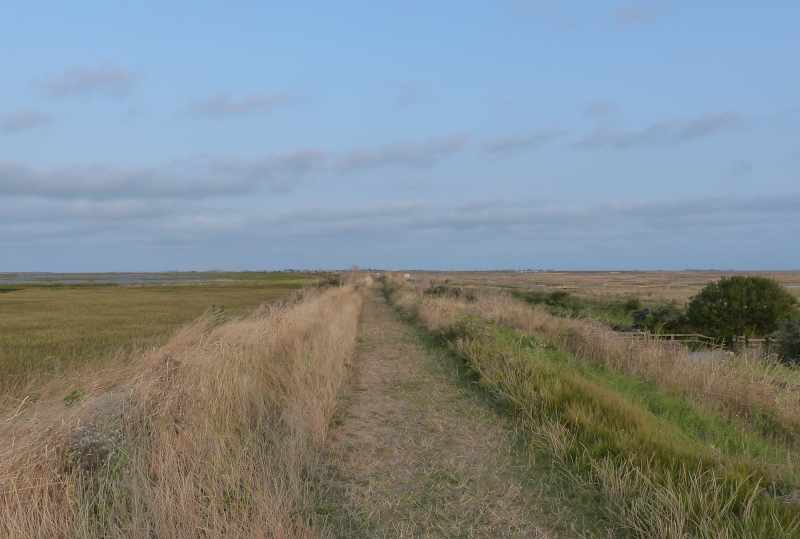
We've never had great luck on this reserve - it's a vast place, and there are innumerable places for things to hide - and it feels like today might be another day where we don't turn up much for the books. We do pick up a few waders (mostly Redshank and Avocet) and lots of nicely-lit Shelduck. Yellow Wagtail makes a predictable appearance also - it feels like we have a constant airborne escort of five or six birds.
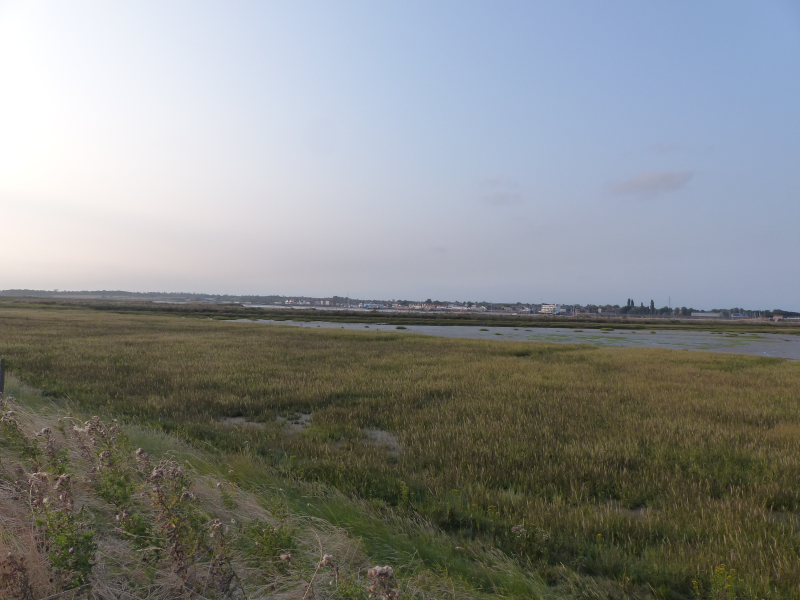
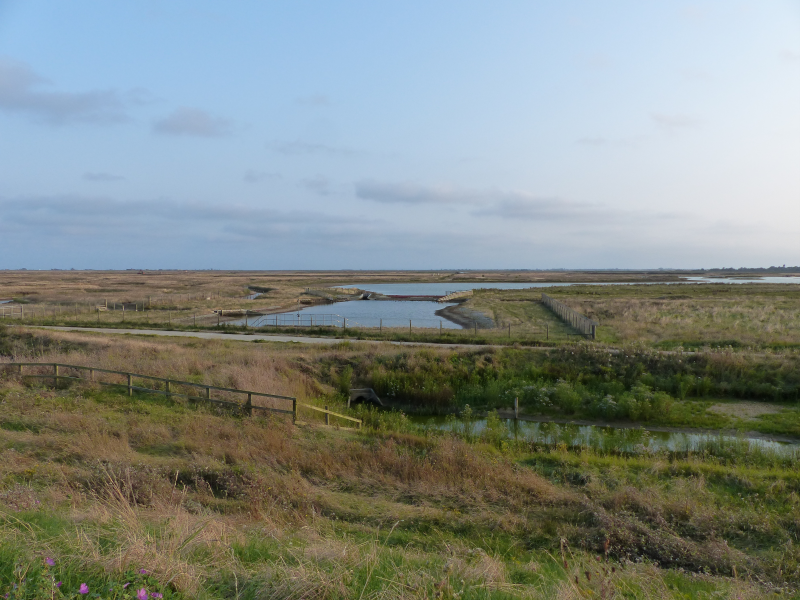
We don't make it as far as the viewpoint - it's further than we think, and we don't fancy getting locked in the car park - so we retrace our steps back to the car. It's a good job we saw all those Spoonbills at Frampton!

Two Tree Island
Former landfill site, model aircraft flying zone and locale of recent flasher reports, Two Tree Island juts out into the Thames Estuary where Leigh-on-Sea comes to a conclusion.
The Western end is what we're here to visit - increasing numbers of Black-tailed Godwit have been reported and sometimes we're suckers for quantity-over-quality birding. The sheer number of birds might manage to keep two nieces, recently returned to the UK from half a decade of life overseas, interested as well.
We save some smaller legs the walk and park up in the free car park. A speedy march to the end installs us in the excellent hide. There are, indeed, a great many Godwits visible here.


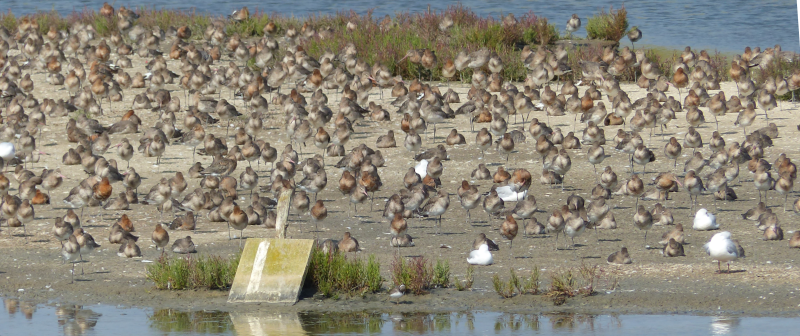
There are a few other birds mixed in - some Avocets, most noticeably, along with several Redshank, a few Dunlin, and, after a more careful look, one or two Ringed Plover. The edges of the islets at the back look like they could be hiding a Greenshank or two as well.
We pass our binoculars around so everyone can have a look - this proves surprisingly popular; we don't get one pair back till we return to the car!
One bird though sticks out like a sore thumb - a mostly summer-plumaged Grey Plover, sitting on an island looking rather lonely.

The scene is wonderfully calm - the vast majority of the birds are sleeping. That is, until a family of paddleboarders decides to climb the bank on the left-hand side of the enclosed area for a family photo, putting up basically every bird we can see. Unlike the birds, the boarders appear oblivious.
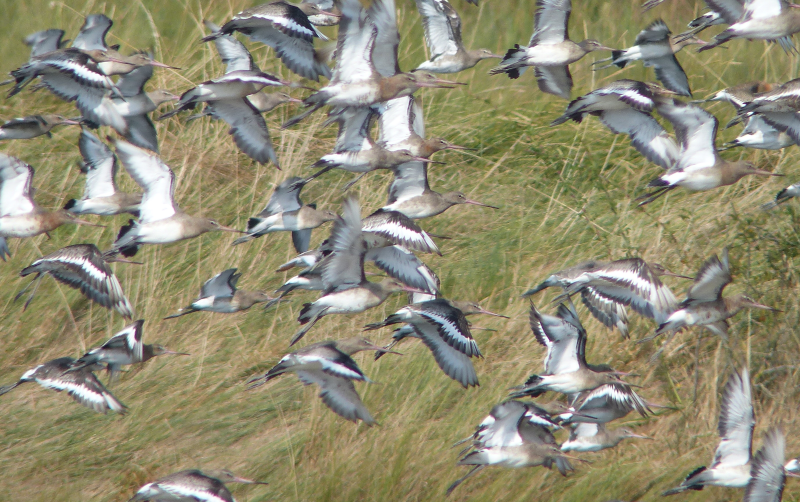

The humans sit down on the bank, and the birds slowly return to their places. The humans appear to ring someone - are they in distress, or are they facetiming a friend? Not clear. After a while they decide their best course of action is to return from whence they came. They manage to do this with roughly the same aplomb with which they arrived, which, unsurprisingly, puts everything up in the air again. Sigh.
Noticeably absent once things calm down again is the Grey Plover. We guess it's up in the sky with several hundred of the birds that seem to have decided that in flight is where they'd like to be for a while. A little bunch of Dunlin and Ringed Plover put on a bit of a show on one of the nearer islands and it feels like we should also be on our way.

The walk back to the car is unexpectedly eventful - a possible Grasshopper Warbler is spotted booking it into some appropriate-looking greenery. Blackberries are picked and eaten. Then, most excitingly, on reaching the large car park at the end of the island, we discover there are around 1,000 Curlew flying over the salt-marshy area that clings to the Eastern edge. As we watch, they slowly descend into the marsh, and not a one is left visible. Neat trick!
From here it's only a short walk back to the car. Thousands of Godwits (and Curlew!) seen. No complaints from either niece. We'll take that.